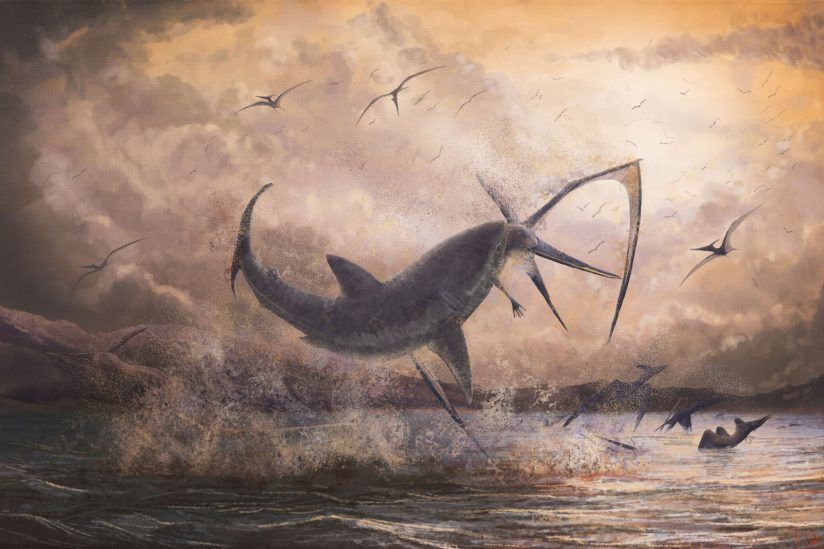
Around 85 million years ago, a fearsome prehistoric shark took a bite out of the neck of a giant flying reptile, losing a tooth in the process.
We know this because researchers from the University of Southern California have examined a remarkable fossil, which recorded the moment for posterity as part of a study published in the journal PeerJ.
Read more: Megalodon was killed off by radiation from supernova explosions, study says
The flying reptile fossil from a pterosaur species known as Pteranodon was first discovered in the Smoky Hill Chalk region of Kansas (which was once an ocean) in the 1960s. It has been locked away in the archives at the Los Angeles County Natural History Museum ever since.
But recently, the research team took an interest in the bones because one of the vertebrae had a 1-inch shark tooth wedged into it. They say that this fossil offers a rare glimpse into the interactions between wildlife in the age of the dinosaurs.
"We have a number of Pteranodon bones with bites from sharks on them, but this is the first with an actual tooth in association," David Hone, from Queen Mary University London, told Newsweek. "We have over 1,100 Pteranodon fossils and hundreds of other pterosaurs and this is only the second with a tooth in it—the other was from a Canadian pterosaur that lived on land and has a dinosaur tooth stuck in it—so this is rare."
"Pteranodon was a large marine pterosaur that probably lived somewhat like a giant gull or albatross," he said. "It could get up to 7 meters (23 feet) or so in wingspan but this individual was more like 5 meters across."
But despite its large size, Pteranodon would have made a tasty meal for the large sharks that roamed the ancient oceans. While the researchers stress that it is impossible to know exactly what happened during the incident, or even if the pterosaur was alive or dead when it was bitten, the flying reptile was likely on the water when the shark tried to take a bite. Pterosaurs could land in water and sometimes ate fish, although they were sluggish when it came to taking off again.
"We know big sharks ate pterosaurs, so we could say a big fast predatory species could very well have eaten this Pteranodon when it entered the water, but we'll probably never know exactly," Michael Habib, a research associate at the L.A. Natural History Museum and author of the study, said in a statement.
The prehistoric shark—identified as the species Cretoxyrhina mantelli—was likely fairly similar to modern-day great white sharks, probably measuring around 2.5 meters in length based on the size of the tooth.
"Understanding the ecology of these animals is important to understanding life on Earth through time," Habib said.
Uncommon Knowledge
Newsweek is committed to challenging conventional wisdom and finding connections in the search for common ground.
Newsweek is committed to challenging conventional wisdom and finding connections in the search for common ground.
About the writer
Aristos is a Newsweek science reporter with the London, U.K., bureau. He reports on science and health topics, including; animal, ... Read more
To read how Newsweek uses AI as a newsroom tool, Click here.








